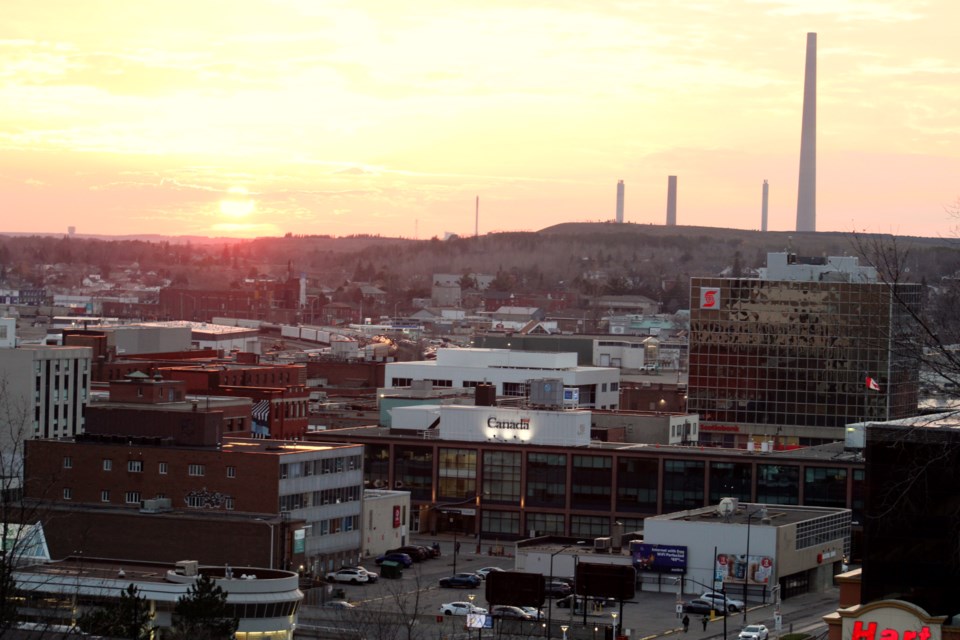With a wealth of downtown Sudbury office buildings listed for sale in recent weeks, local real estate companies have been marketing them as candidates for residential conversions.
It’s a broader trend fuelled by a shift in need as more people work from home in the wake of the COVID-19 pandemic, Royal LePage broker Paul Kusnierczyk told Sudbury.com.
“COVID certainly has something to do with that right now,” he said. “There’s just less demand for offices.”
Some notable buildings include Scotia Tower (an 86,225-square-foot building at 30 Cedar St. currently 80 per cent vacant), 93 Cedar Street (29,000 square feet and 58 per cent vacant), and 2 Lisgar St. (the old National Bank building, 10,598 square feet, vacant).
Kusnierczyk’s listings include 30 Ste. Anne Road, a nine-storey building with 54,273 square feet of rentable area, of which 70 per cent is vacant.
As with various other downtown office buildings, its units have been marketed as potential candidates for residential conversion.
Adding more residential units to the city’s downtown core has been discussed in municipal planning documents since at least the ’60s, city senior planner Ed Landry told Sudbury.com.
The ongoing goal, he said, has been “turning the downtown from a nine to five to a more of a 24/7 neighborhood.”
This way, he added, cafes, restaurants and other businesses are able to stay open later because there are more people around outside of business hours.
“It's just getting people on the sidewalk.”
At the same time, he clarified that downtown is expected to remain an important hub for the city’s office space, which the city’s Employment Land Strategy also affirms.
Landry said building owners can receive municipal support for office-to-residential conversions through various municipal efforts, such as the Residential Incentive Program, which provides a grant of $20 per square foot of newly-created or newly-habitable residential space, or $20,000 per dwelling unit, whichever is lesser, up to $200,000 per property.
Various other incentive programs built into the city’s Strategic Core Areas Community Improvement Plan also help property owners and leaseholders convert office space to meet other needs.
“Over the past few decades, there has been an accelerating trend of office densification — a decline in the amount of office space per worker,” according to the strategy, which also notes that greater-than-usual vacancy levels are expected to continue until business confidence and activity is restored post-pandemic.
Office spaces have also been trending toward shared space and work pods, and the city’s collection of incentive programs includes interest-free loans of up to $250,000 for leaseholders to make eligible permanent improvements to make associated changes.
Both Landry and Kusnierczyk said they’re uncertain as to whether the number of downtown office buildings currently up for sale is unusual, and Mallette-Goring Inc. broker Chris Tammi noted the downtown properties 60-62 Elm St., 83 Cedar St., 96 Larch St., and 120 Larch St. were all sold within the last year.
In the midst of a shift toward more residential units downtown, Kusnierczyk said office space is anticipated to maintain an important footprint into the long term.
“I'm a firm believer that we're going to see less work from home and more companies asking their employees to go back to the office,” he said.
“There's going to be a trend back to companies needing more office space in the future, but I do definitely think that it's going to end up being a mix.”
The city’s Employment Land Strategy notes that following a COVID-era downturn, the office demand might eventually surpass pre-pandemic levels, “due to eCommerce and other logistics-related opportunities, and any manufacturing renaissance that might emerge.”
Positive things are happening downtown, Kusnierczyk said, adding he’s “very excited about the opportunities for downtown,” and that several new businesses have opened and there’s a new mayor and city council at the helm.
“Hopefully, people do apply for the (Community Improvement Plan) programs because they're there, and the focus is very much on the office spaces,” Landry said.
Sudbury.com reached out to Downtown Sudbury Business Improvement Area managing director Kyle Marcus and Ward 10 (downtown) Coun. Fern Cormier by both phone and email this week, but did not receive any response.
The Sudbury Real Estate board declined comment, as the representative who answered their phone said the lone person willing to speak to the media is out of town.
Some notable downtown office buildings currently listed include:
- 2 Lisgar St. at $1.59 million. This is the old National Bank building, and its 10,598 square feet are vacant.
- 93 Cedar St. is listed at $3.9 million. It has more than 29,000 square feet of office space separated across six units, and is 42 per cent leased.
- 43 Elm St. is $6.9 million, and its 41,568 square feet is fully leased.
- 124 Cedar St. is approximately $6 million, and its 24,000 square feet of space is fully leased.
- 143 Durham St. is $479,900, and its main and third levels are fully leased, while its second floor of approximately 1,400 square feet is vacant.
- 73 Elm St. is almost $1 million, and its 14,229 square feet of space is fully leased.
- 30 Ste. Anne Rd. has 54,273 square feet of rentable area, is $4.5 million and is 30 per cent leased.
- 30 Cedar St., known as Scotia Tower, is $6.75 million, 86,225 square feet and 80 per cent vacant.
Tyler Clarke covers city hall and political affairs for Sudbury.com.
